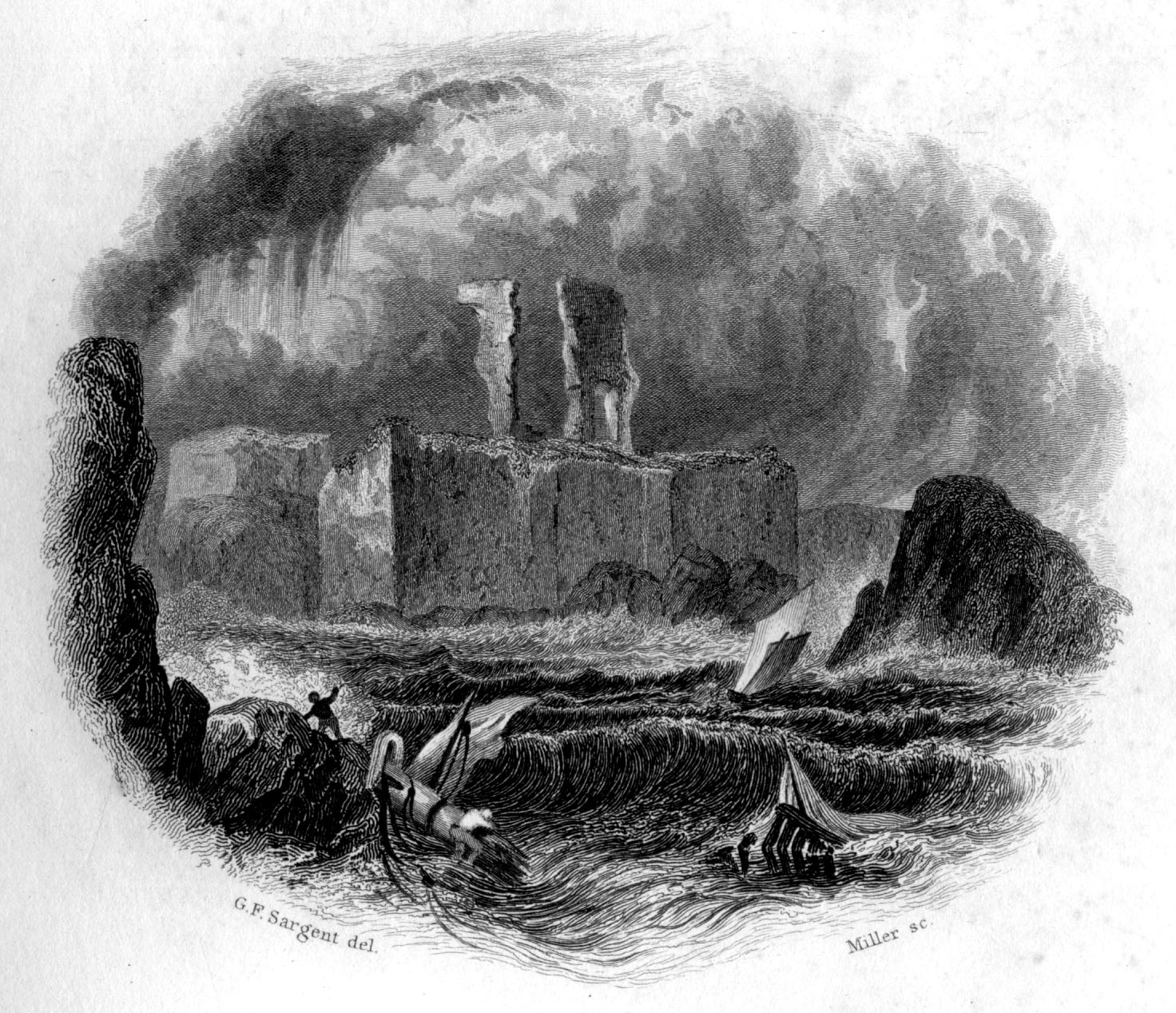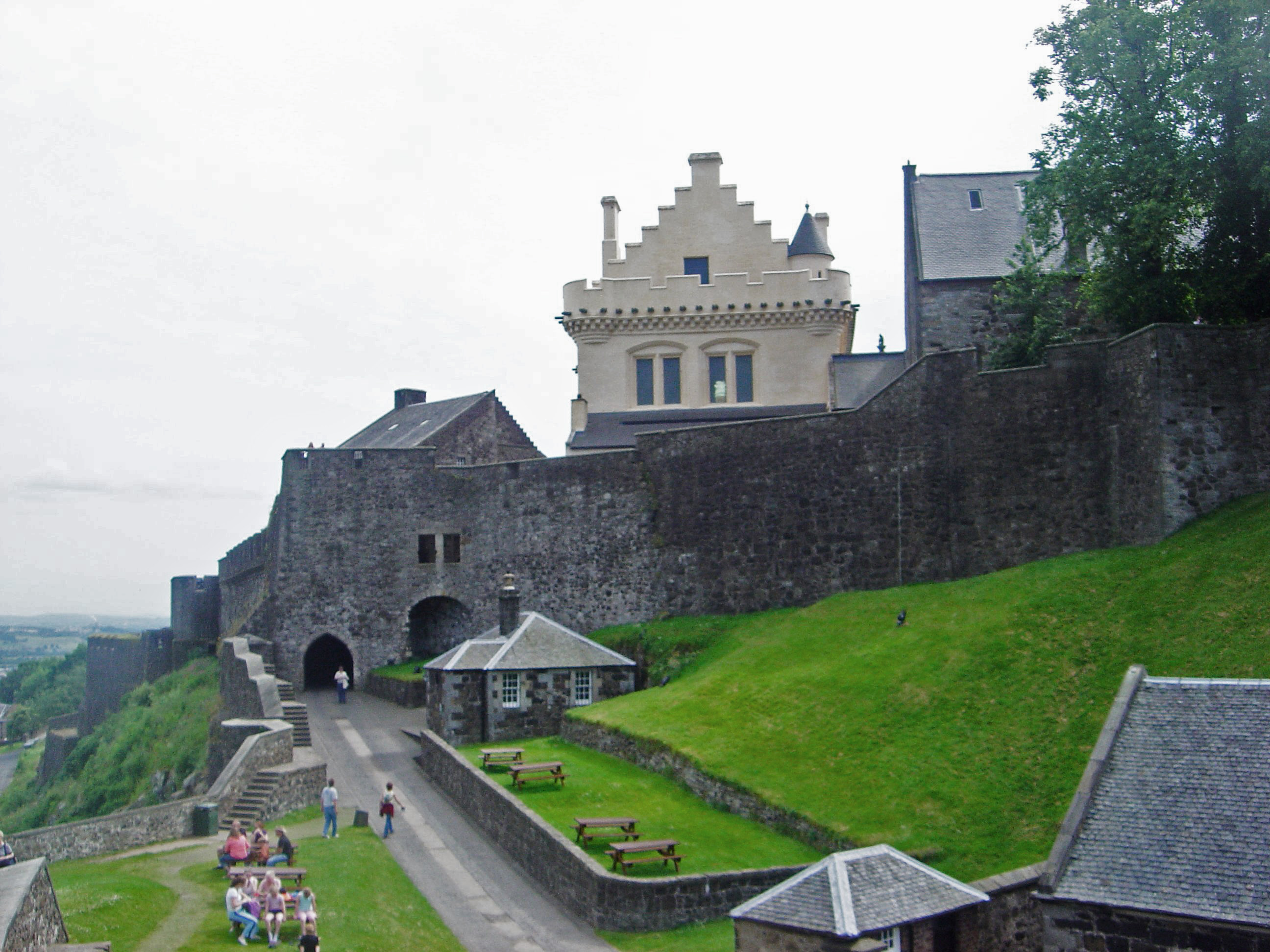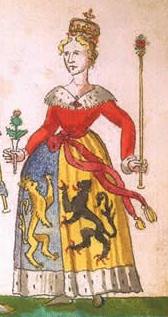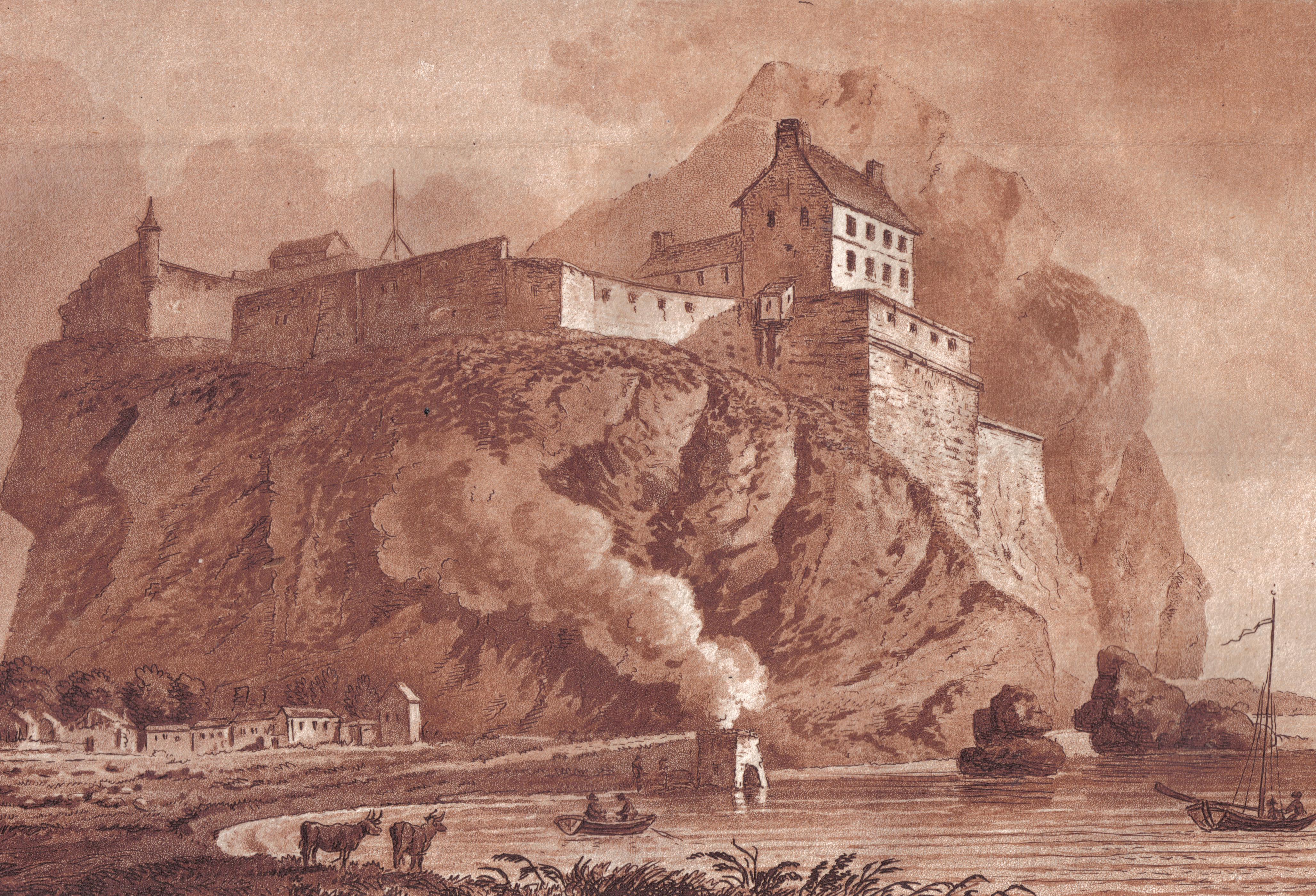|
Clan Colquhoun
Clan Colquhoun ( ) is a Highland Scottish clan. History Origins of the clan The lands of the clan Colquhoun are on the shores of Loch Lomond. During the reign of Alexander II, Umphredus de Kilpatrick received from Malduin, Earl of Lennox, the estates of Colquhoun, Auchentorily and Dumbuck. The clan chief's early stronghold was at Dunglass Castle, which is perched on a rocky promontory by the River Clyde. Dunglass was also close to the royal Dumbarton Castle, of which later Colquhoun chiefs were appointed governors and keepers. The chief's title was that of the Barony of Luss which came to the clan when Sir Robert of Colquhoun married the heiress of the Lord of Luss in about 1368. 15th and 16th centuries During the minority of James II of Scotland, Sir John Colquhoun was appointed governor of the royal Dumbarton Castle. However he was murdered during a raid at Inchmurrin in 1439. He was succeeded by his son, another Sir John, who rose to be Comptroller of the Roya ... [...More Info...] [...Related Items...] OR: [Wikipedia] [Google] [Baidu] |
Scottish Highlands
The Highlands (; , ) is a historical region of Scotland. Culturally, the Highlands and the Scottish Lowlands, Lowlands diverged from the Late Middle Ages into the modern period, when Scots language, Lowland Scots language replaced Scottish Gaelic throughout most of the Lowlands. The term is also used for the area north and west of the Highland Boundary Fault, although the exact boundaries are not clearly defined, particularly to the east. The Great Glen divides the Grampian Mountains to the southeast from the Northwest Highlands. The Scottish Gaelic name of ' literally means "the place of the Gaels" and traditionally, from a Gaelic-speaking point of view, includes both the Western Isles and the Highlands. The area is very sparsely populated, with many mountain ranges dominating the region, and includes the highest mountain in the British Isles, Ben Nevis. During the 18th and early 19th centuries the population of the Highlands rose to around 300,000, but from c. 1841 and for th ... [...More Info...] [...Related Items...] OR: [Wikipedia] [Google] [Baidu] |
Loch Lomond
Loch Lomond (; ) is a freshwater Scottish loch which crosses the Highland Boundary Fault (HBF), often considered the boundary between the lowlands of Central Scotland and the Highlands.Tom Weir. ''The Scottish Lochs''. pp. 33-43. Published by Constable and Company, 1980. Traditionally forming part of the boundary between the shires of Scotland, counties of Stirlingshire and Dunbartonshire, Loch Lomond is split between the Subdivisions of Scotland, council areas of Stirling (council area), Stirling, Argyll and Bute and West Dunbartonshire. Its southern shores are about northwest of the centre of Glasgow, Scotland's largest city. The Loch forms part of the Loch Lomond and The Trossachs National Park which was established in 2002. From a limnological perspective, Loch Lomond is classified as a dimictic lake, meaning it typically undergoes two mixing periods each year. This occurs in the spring and autumn when the water column becomes uniformly mixed due to temperature-driven dens ... [...More Info...] [...Related Items...] OR: [Wikipedia] [Google] [Baidu] |
Fugitive
A fugitive or runaway is a person who is fleeing from custody, whether it be from jail, a government arrest, government or non-government questioning, vigilante violence, or outraged private individuals. A fugitive from justice, also known as a wanted person, can be a person who is either convicted or accused of a crime and hiding from law enforcement in the state or taking refuge in a different country in order to avoid arrest. A fugitive from justice alternatively has been defined as a person formally charged with a crime or a convicted criminal whose punishment has not yet been determined or fully served who is currently beyond the custody or control of the national or sub-national government or international criminal tribunal with an interest in their arrest. This latter definition adopts the perspective of the pursuing government or tribunal, recognizing that the charged (versus escaped) individual does not necessarily realize that they are officially a wanted person (e ... [...More Info...] [...Related Items...] OR: [Wikipedia] [Google] [Baidu] |
Duke Of Montrose
Duke of Montrose (named for Montrose, Angus) is a title that has been created twice in the Peerage of Scotland. The title was created anew in 1707, for James Graham, 1st Duke of Montrose, James Graham, 4th Marquess of Montrose, great-grandson of famed James Graham, 1st Marquess of Montrose. Montrose was elevated as a reward for his important support of the Acts of Union 1707, Act of Union. It has remained since then in the Graham family, tied to the Scottish clan chief, chieftainship of Clan Graham. The Duke's subsidiary titles are: Marquess of Montrose (created 1644), Marquess of Graham and Buchanan (1707), Earl of Montrose (1503), Earl of Kincardine (1644), Earl Graham (1722), Viscount Dundaff (1707), Lord Graham (1445), Lord Graham and Mugdock (1644), Lord Aberruthven, Mugdock and Fintrie (1707) and Baron Graham, of Belford (1722). The titles of Earl Graham and Baron Graham are in the Peerage of Great Britain; the rest are in the Peerage of Scotland. The eldest son of the Duk ... [...More Info...] [...Related Items...] OR: [Wikipedia] [Google] [Baidu] |
List Of Baronetcies In The Baronetage Of Nova Scotia
This is a list of baronetcies in the Baronetage of Nova Scotia. These were first created in 1624, and were replaced by the Baronetage of Great Britain in 1707. This page lists baronetcies, whether extant, extinct, dormant (D), unproven (U), under review (R), abeyant, or forfeit, in the Baronetage of Nova Scotia. The holders of some of the baronetcies listed on the list have died but in each case, up to the present, no person has proved succession and thus been placed upon the Official Roll of the Baronetage. Those that are marked with a "Dormant" in the penultimate column are regarded as being dormant since, although heirs are known to exist, succession has not been proved within a period of five years from the death of the holder. A baronetcy becomes extinct when heirs cannot be traced and are believed not to exist. In this case it should not be listed on the Official Roll but would be re-activated should an heir subsequently emerge. The Royal Warrant of Edward VII of 8 Fe ... [...More Info...] [...Related Items...] OR: [Wikipedia] [Google] [Baidu] |
Battle Of Pinkie Cleugh
The Battle of Pinkie, also known as the Battle of Pinkie Cleugh (), took place on 10 September 1547 on the banks of the River Esk, Lothian, River Esk near Musselburgh, Scotland. The last pitched battle between Scotland and England before the Union of the Crowns, it was part of the conflict known as the Rough Wooing. It was a catastrophic defeat for Scotland, where it became known as "Black Saturday".Phillips, p. 193 A highly detailed and illustrated English account of the battle and campaign authored by an eyewitness William Patten (historian), William Patten was published in London as propaganda four months after the battle. Background During the final years of his reign, King Henry VIII of England tried to secure an alliance with Scotland by the marriage of the infant Mary, Queen of Scots to his young son, the future Edward VI. When diplomacy failed, and Scotland was on the verge of an alliance with early modern France, France, he launched a war against Scotland that has beco ... [...More Info...] [...Related Items...] OR: [Wikipedia] [Google] [Baidu] |
Dunbar Castle
Dunbar Castle was one of the strongest fortresses in Scotland, situated in a prominent position overlooking the Dunbar Harbour, harbour of the town of Dunbar, in East Lothian. Several fortifications were built successively on the site, near the English-Scottish border. The last was slighting, slighted in 1567; it is a ruin today. Structure The body of buildings measured in excess of from east to west, and in some places up to from north to south. The South Battery, which Grose supposes to have been the citadel or keep, is situated on a detached perpendicular rock, only accessible on one side, high, and is connected to the main part of the castle by a passage of masonry measuring . The interior of the citadel measures within the walls. Its shape is octagonal. Five of the gun-ports remain, which are called the 'arrow-holes'. They measure at the mouth and only at the other end. The buildings are arched and extend from the outer walls, and look into an open court, whence th ... [...More Info...] [...Related Items...] OR: [Wikipedia] [Google] [Baidu] |
James IV Of Scotland
James IV (17 March 1473 – 9 September 1513) was List of Scottish monarchs, King of Scotland from 11 June 1488 until his death at the Battle of Flodden in 1513. He inherited the throne at the age of fifteen on the death of his father, James III of Scotland, James III, at the Battle of Sauchieburn, following a rebellion in which the younger James was the figurehead of the rebels. James IV is generally regarded as the most successful of the House of Stuart, Stewart monarchs of Scotland. He was responsible for a major expansion of the Royal Scots Navy, Scottish royal navy, which included the founding of two royal dockyards and the acquisition or construction of 38 ships, including the ''Great Michael'', the largest warship of its time. James was a patron of the arts and took an active interest in the law, literature and science. With his patronage the Chepman and Myllar Press, printing press came to Kingdom of Scotland, Scotland, the University of Aberdeen and the Royal College o ... [...More Info...] [...Related Items...] OR: [Wikipedia] [Google] [Baidu] |
Edward IV Of England
Edward IV (28 April 1442 – 9 April 1483) was King of England from 4 March 1461 to 3 October 1470, then again from 11 April 1471 until his death in 1483. He was a central figure in the Wars of the Roses, a series of civil wars in England fought between the Yorkist and Lancastrian factions between 1455 and 1487. Edward inherited the Yorkist claim to the throne at the age of eighteen when his father, Richard, Duke of York, was killed at the Battle of Wakefield in December 1460. After defeating Lancastrian armies at Mortimer's Cross and Towton in early 1461, he deposed King Henry VI and took the throne. His marriage to Elizabeth Woodville in 1464 led to conflict with his chief advisor, Richard Neville, Earl of Warwick, known as the "Kingmaker". In 1470, a revolt led by Warwick and Edward's brother George, Duke of Clarence, briefly re-installed Henry VI. Edward fled to Flanders, where he gathered support and invaded England in March 1471; after victories at the ba ... [...More Info...] [...Related Items...] OR: [Wikipedia] [Google] [Baidu] |
Inchmurrin
Inchmurrin () is an island in Loch Lomond in Scotland. It is the largest lake island, fresh water island in the British Isles. Geography and geology Inchmurrin is the largest and most southerly of the islands in Loch Lomond. It reaches a height of towards the north and is largely wooded. There is an excellent view of the north end of the loch. Along with Creinch, Torrinch, and Inchcailloch, Inchmurrin forms part of the Highland boundary fault. History Inchmurrin was the site of a 7th-century monastery, with a chapel dedicated to Saint Mirin, after whom it was named. The island was formerly a deer park of the Duke of Montrose, Dukes of Montrose, who had a hunting lodge built in 1793 and maintained a gamekeeper and his family there. 200 deer are recorded in 1800. There are ruins of a castle, probably built for Duncan, 8th Earl of Lennox whose seat was Balloch Castle (West Dunbartonshire), Balloch Castle at the south end of Loch Lomond. The castle was probably a hunting ... [...More Info...] [...Related Items...] OR: [Wikipedia] [Google] [Baidu] |
James II Of Scotland
James II (16 October 1430 – 3 August 1460) was King of Scots from 1437 until his death in 1460. The eldest surviving son of James I of Scotland, he succeeded to the Scottish throne at the age of six, following the assassination of his father. The first Scottish monarch not to be crowned at Scone, James II's coronation took place at Holyrood Abbey in March 1437. After a reign characterised by struggles to maintain control of his kingdom, he was killed by an exploding cannon at Roxburgh Castle in 1460. Life James was born in Holyrood Abbey. He was the son of King James I and Joan Beaufort. By his first birthday, his only brother, his older twin, Alexander, had died, thus leaving James as heir apparent with the title Duke of Rothesay. On 21 February 1437, James I was assassinated, and the six-year-old James immediately succeeded him as James II. He was crowned in Holyrood Abbey by Abbot Patrick on 25 March 1437. On 3 July 1449, the eighteen-year-old James married t ... [...More Info...] [...Related Items...] OR: [Wikipedia] [Google] [Baidu] |
Dumbarton Castle
Dumbarton Castle (, ; ) has the longest recorded history of any stronghold in Scotland. It sits on a volcanic plug of basalt known as Dumbarton Rock which is high and overlooks the Scottish town of Dumbarton. History Dumbarton Rock was formed between 330 and 340 million years ago, during the Early Carboniferous period, a time of widespread volcanic activity in the area where Glasgow is now situated; over time, the softer exterior of the volcano weathered away, leaving behind a volcanic plug of basalt. Iron Age At least as far back as the Iron Age, this has been the site of a strategically important settlement, as evidenced by archaeological finds. The people that came to reside there in the era of Roman Britain were known to have traded with the Romans. However the first written record about a settlement there was in a letter that Saint Patrick wrote to King Ceretic of Alt Clut in the late 5th century. Early Medieval era David Nash Ford has proposed that Dumbarton was th ... [...More Info...] [...Related Items...] OR: [Wikipedia] [Google] [Baidu] |







